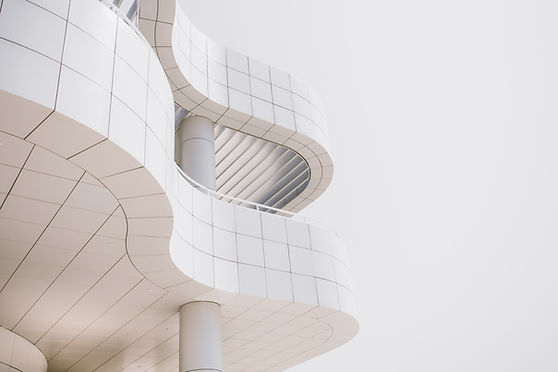Artificial Intelligence and Art: How AI is Taking Over the Field
- BB and Rose
- May 12, 2023
- 4 min read
The ethical dilemma that AI artists are facing.
By: BB 9.1, Rose 9.1

Nowadays, we as humans are becoming more and more reliant on robots and Artificial Intelligence (AI) to perform tasks for us. When you think about it, just the apps and AI in our phones alone have outperformed and replaced hundreds of past inventions, and it’s only getting easier for us as we move forward.
With a simple press or scroll, we’ve outdone inventions like TVs, radios and cameras, not to mention other futuristic tasks which would have been that much more difficult. Instead of having to carry loads from the supermarket back home, we can press a button and wait less than minutes to have everything delivered to our doorstep. Despite that, the subject of this article isn’t about the countless old machines and inventions we are replacing and improving, but about artists.
One of the things AI has been taking over is artwork. These are art generated with the assistance of artificial intelligence. It uses algorithms and creative tools to set up certain rules to analyze many images to comprehend particular creation process such as the style or aesthetic. The algorithms are then used to generate forms, patterns and shapes to produce an entire new work.
The first step in creating most pieces of AI-generated art is the prompt. One of the most popular AI generators is DALL-E. In this specific AI art generator, prompts can be about anything and many AI artists have found ways to create some of the most precise prompts. These prompts can include the various subjects, and many specific details like the art materials used, lighting or even the style of specific artists which affects the precision of the prompts making them vary wildly.
For example, something really vague may have more simple or subjectively basic artworks compared to a more specific prompt making the artwork closer to what the artist planned in their heads which, in defense of AI artists, is technically its own creative form. After that, the AI will search for art online that has the same descriptions as the prompts which allow the AI to observe the features that make up the artwork like the colors, the brush strokes, the shadows, and lighting the shading basically what they can use in their artwork.
The second step is creating the artwork itself. Up until now, AI follows steps that regular artists and designers follow, cutting and adding parts of other pieces of art or photography or collaging, which many digital artists and some AIs do (with certain limitations).
AI art generators use two different types of technology, ‘clip’ and ‘unclip’. The clip takes in various online references like artworks, photos, etc. whilst unclip takes in language-based information like comparing the words in the prompts or finding words associated with the results given through the prompts. The AI generator’s job is to figure out the intersection between both.
In simpler words, the clip finds out what should be in the photos (subjects, backgrounds, colors, art styles, etc.) whilst unclip takes word instructions from the prompt and fills everything in. What AI art generation does is more like taking inspiration from artworks rather than what people think AIs do which is taking parts from artworks and collaging.
Apart from DALL-E II, which is an AI system that creates realistic images from description, other AI art generators have also gone viral such as Lensa, an AI portrait app. It was launched in 2018 and went viral after realizing its “magic avatar” feature. It generates portraits in different digital art styles by using Stable Diffusion. This is a text-to-image styled AI where images are generated based on the text descriptions and trained to use existing images and texts from over five billion images gathered by a nonprofit data set called LAION, including the work of other artists.
Although this app claimed the number one spot in IOS App Store’s “Photo and Video” category after it was released, many artists accuse Stable Diffusion of using their art without permission. They also expressed doubts about how the AI models mass produce images at a much cheaper price. For a $7.99 service fee (about 260 THB) users can receive 50 pieces of digital artwork at a fraction of what a single portrait usually costs. AI generated arts are potentially taking over hard work invested by humans to create noteworthy art.
An Australian artist called Leutwyler said, “People are calling Lensa original work, but some artists are having their exact style replicated exactly in brush strokes, color, composition- techniques that take years and years to refine.”
But as we mentioned before that’s not really how AI artworks. This begs the question, is it fair for us to compare artwork made by AI with manmade artwork?
When artists take inspiration from artworks and art styles, it’s completely acceptable. But if AI is doing the same thing, in less than a minute, what does that mean for the artists? People have already used AI for exhibits and art competitions. There is still a creative process involved in making the prompts, but can this one AI be replacing many more in an already difficult industry?
Many writers and video journalists have already pointed out another interesting perspective. Cleo Abram, a video journalist said, “The uncomfortable question I keep wondering is: Is all this any worse than what I’ve benefited from?”
As online journalists, it would be impossible to do what we do know without the technology we have now that has probably put millions of publishers, typewriters, and designers out of work and that’s the power of these new technologies.
Abram said, “When used correctly, (technology) can unlock an abundance from scarcity. And in this case, that abundance is human creativity.” So, what are you going to create?





Comments